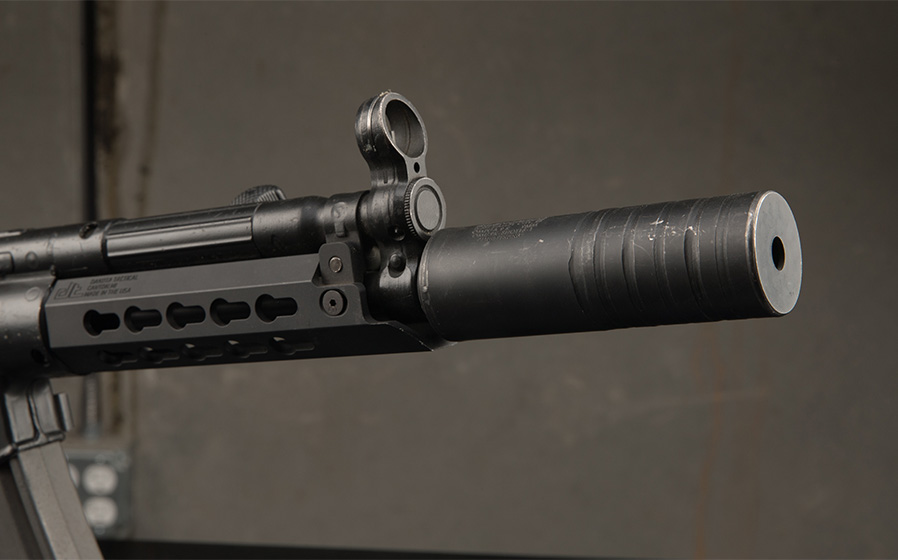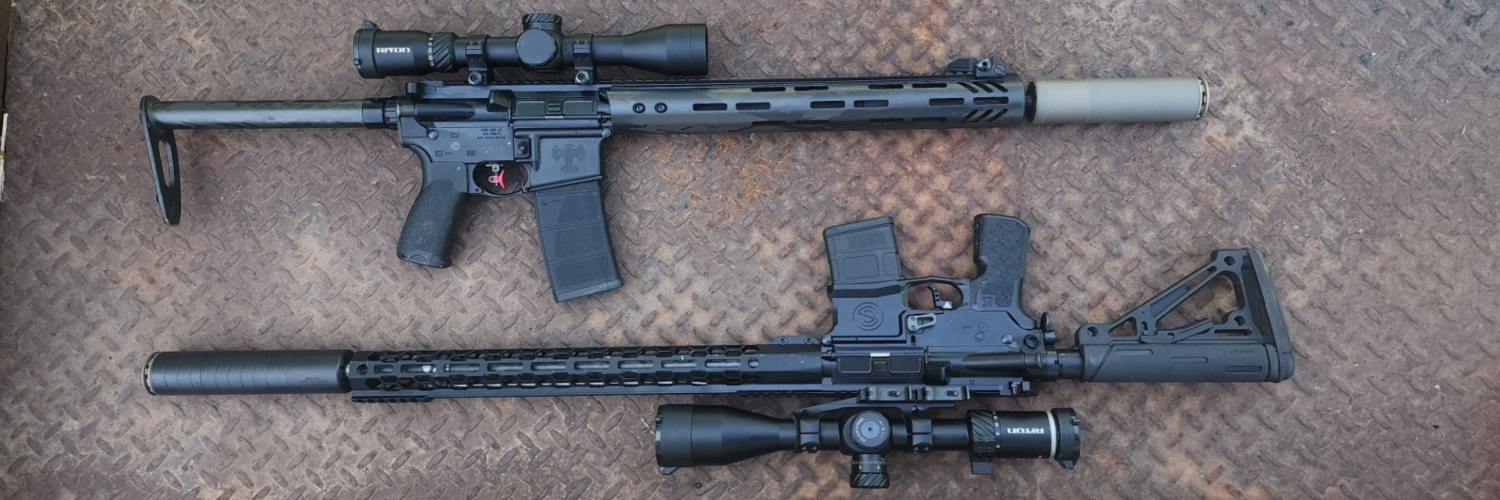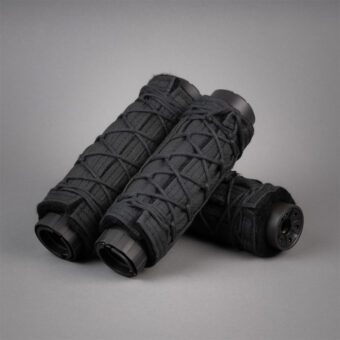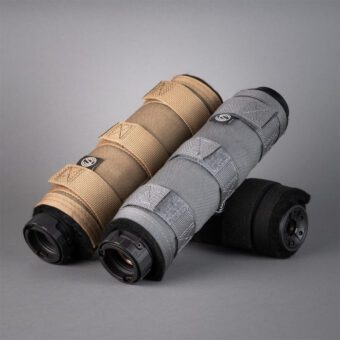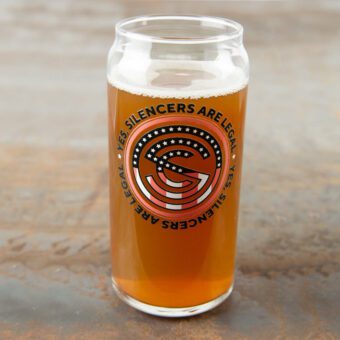Home / Silencer & Gun News / Arsenal Blog 012: MP5
Arsenal Blog 012: MP5
Home / Silencer & Gun News / Arsenal Blog 012: MP5
Arsenal Blog 012: MP5
SILENCERCO’S ARSENAL SERIES showcases guns we love for various reasons that reside in our in-house arsenal. We are best-known for making guns quiet in order to do this, we must interact with a great variety of amazing platforms. In these posts we will tell you about each platform we like, why it’s different and relevant, and why we think it belongs in our pantheon of greatness.
Arguably the world’s most common submachine gun: the MP5. The only notable competition? The Israeli Uzi. We can’t pretend to argue for or against either admired platform; they’re both outstanding. But there are a few common disputes for each weapon’s utility. Both platforms were originally chambered for 9mm, (though both have additional chamberings now), for lighter weight and less recoil. While the Uzi weighs an empty 7.72 pounds, the MP5 dominates with a mere 5.5 empty weight. The stockless Uzi is an insane 10 inches shorter than the first MP5 due to the telescoping bolt design. The MP5 is closed bolt; the Uzi is open bolt. They’re both respected for good reason.
Regardless, German weapon designers recognized the success of the HK G3 during its adoption by the West German Army in 1959. With the G3 as the foundation, four German designers drafted the first MP5 (short for Maschinenpistole 5 translation Submachine gun 5) in the early 1960’s. Two years after conception, the MP5 was adopted by German police and border guard. Numerous German law enforcement groups still use it today, as well as 40 other nations, including a prevalence in many American SWAT teams. Today, there are over 100 MP5 variants, including large caliber, semi-auto, K versions, and (our favorite) suppressed.
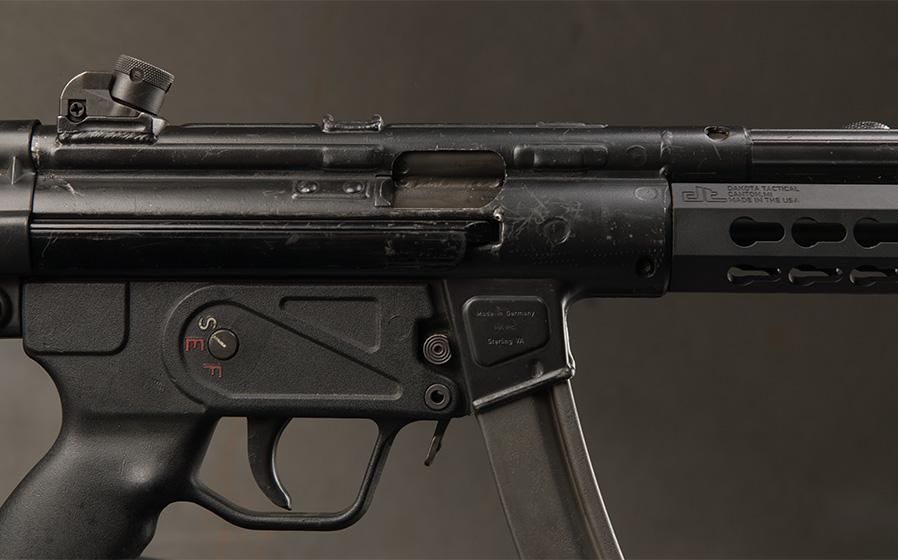
The roller-delayed blowback and closed bolt system can fire up to 900 rounds/minute, depending on the model. Effective firing ranges reach up to 650 feet (200 meters) in the 9mm models with factory iron sights. Feed systems engage 15-, 30-, or 40-round box magazines or 100-round drum mags. Original designs featured straight box mags, though the proven reliability of curved magazines eventually replaced them.
Original models had three positions:
S Sicher, German for sure (think safe)
E Einzelfeuer meaning single fire (or semiautomatic)
F Feuerstoß meaning fire shock (less literally, automatic)
Both E and F are marked in red to denote a firing position. SEF symbols appear on both sides of the trigger, though the selector was initially located only on the left side. Newer ambidextrous models can be switched with either hand on either side of the trigger group. Variants like the semi-auto-only MP5SFA display only S and E.
H&K formed the suppressed MP5SD (SD Schalldämpfer German for sound suppressor) in 1974. This particular model was designed to be quieter and more discrete. The integral (and detachable) sound suppressor reduces sound report. In addition, the SD model keeps bullet velocity reliably subsonic, negating audible sonic crack. This particular version was designed for use only with supersonic ammo and the suppressor attached. And since we can’t stop at good, we sought for better, inventing an alternate MP5SD can. If you haven’t seen our shorter and quieter version, you can check it out here.
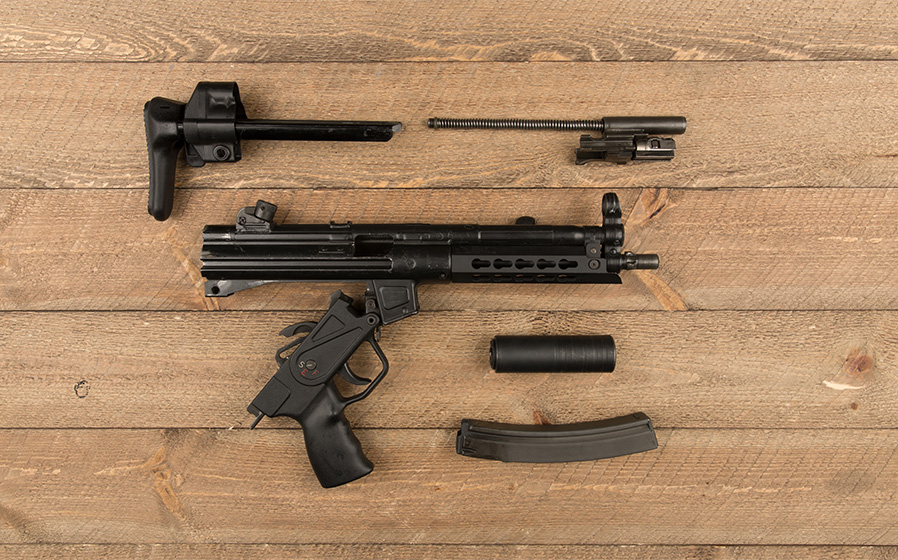
Bottom line
We like unique designs and the P90 blazed a trail with a new family of special purpose cartridges, a solid trigger for a bullpup, compact size and shape, ambidextrous controls, a new way to feed a high capacity magazine, and its own companion pistol chambered in the same round. The fact that it also lends itself to such a wide variety of suppressors of course makes it even cooler.
